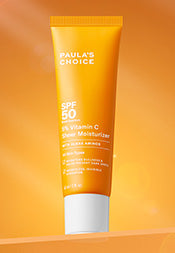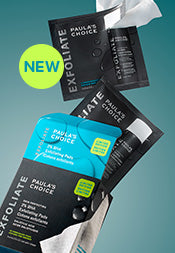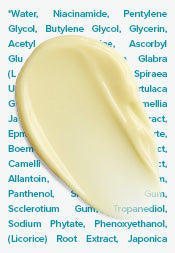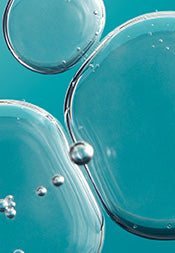Can Microneedling Address Skin Concerns?
Microneedling is a skincare technique with a name that pretty much sums up what it is and what it does: Tiny needles attached to a device that repeatedly punctures the skin. It may sound fairly straightforward but it isn’t.
There are several questions about microneedling and for good reason: The claims for what it can do to improve common skin concerns are pretty unbelievable. Microneedling, aside from well-formulated skincare products, is being touted as the solution for everything from improving acne scars to acting as the ultimate wrinkle treatment, helping skincare treatment ingredients penetrate better, and even to grow hair! The laundry list of its attributes makes it easy to understand the intense interest in the question, “Does microneedling work?”
The answer is yes, to some extent. However, despite numerous published studies and articles about microneedling, it isn’t easy getting to the truth about what it can and can’t do. That’s because much of the information is often skewed by either poorly controlled studies or is done by brands and companies selling the devices or procedures. This means that there’s built-in motivation for favourable outcomes. Here’s the basics of what you need to know to make an educated decision about whether microneedling is for you.
How Can MicroneedlingImprove Your Skincare Routine?
Microneedling, especially when done in a medical setting, is recognised by the research as an acne scar treatment option and a means to improve many different types of acne scarring. However, the before and after photographs you’re shown are always the ones that are the most impressive, you’ll rarely see pictures of the people who only had less than stellar results. Just know that not everyone will get the “best” results after integrating microneedling into their skincare routine.
The claims touting microneedling for wrinkles, skin discolourations, and pore size have research that’s somewhat less clear. Some studies show worthwhile results but with others, not so much. There is also the issue of the reliability of the research because some of it comes from the companies that are marketing and selling the device or service. However, in theory, at least when it comes to wrinkles, with the help of regular skincare, microneedling should work because of the way it builds support in the lower layers of skin. The other claims should be viewed with scepticism.
When it comes to dimpled skin, even some of the companies selling or using microneedling devices make it clear to their target market that their products or services don’t work for that type of skin concern. This condition occurs when uneven fibrous connective tissue mixes with fat, even small amounts of fat, and creates areas of what’s known as “cottage cheese” skin. You simply can’t puncture that away.
Skin striations due to pregnancy or rapid weight changes can improve in the smallest ways from microneedling by “loosening” up the tread marks, but it doesn’t raise up the skin or replace the scar tissue with normal tissue.
Another claim about microneedling is that it enhances the penetration of skincare ingredients. There is limited research showing that microneedling has some benefits for delivering topical prescription-only ingredients into the skin when done in a very controlled setting and followed through by proper aftercare recommendations, but this does not apply to natural skincare ingredients. Keep in mind that skincare ingredients penetrate based on their molecular structure, and not all skincare ingredients need to penetrate deeply into the skin. A brilliant skincare product contains ingredients that interact with varying layers of skin. If everything is absorbed deeply it wouldn’t be where the skin needs it most.
The major issue for helping skincare ingredients absorb better into skin is what happens when skin is constantly being wounded with regular use of at-home devices, which eventually cause damage.
The secondary, but still important issue, is that skincare ingredients like antioxidants, sunscreen actives, hyaluronic acid, ceramides, and skin-replenishing ingredients in general must stay in the top layers of skin to have benefits. Environmental free-radical damage hits skin’s surface layers first, so if there’s nothing there to help these troublemakers simply keep going, stopping them sooner is better for skin. Some ingredients, such as retinol, could benefit from deeper absorption, but that's not always a good thing because when the skin is compromised, that direct absorption can cause a sensitising reaction. An enhanced slow-release delivery system in the retinol products you buy is so much better for the skin.
The Different Types of Microneedling Devices
With so many different kinds of microneedling devices branded with different product names available, it’s impossible to list all of them. We compiled a summary of the more popular microneedling devices you need to know about:
Dermarollers resemble small manual paint rollers with a round, rotating cylinder that has up to 200 tiny needles protruding from it and a handle for easy moving around your face. These are sold for at-home use as they are easy to handle. Yes, they puncture hundreds of tiny holes in your skin. Thankfully, these rarely break the skin. However, as we further explain below, using such tools at home is probably not a good idea.
Dermapens are pen-like devices, with a circular head studded with tiny needles. The motor-driven needles move in and out of the skin, piercing it with thousands of tiny punctures. The concentration of the needles in a tiny point is helpful for small dented acne scars. These are mostly used in a medical setting but they can also be purchased for at-home use, but again, this could be a bad idea.
Dermastamps may resemble Dermapens but have a larger head with more needles protruding from it for use on larger areas. Dermastamps may be motorised or manual, and work exactly as the name implies: Rather than rolling needles over the skin the needles are systematically stamped into the skin.
Microneedling devices used with light emitting diodes (LED) is a process of using a microneedling device with an LED device. LED light has been shown to have benefits for skin rejuvenation. However, published research about this combination doesn’t exist at this time except from companies promoting it.
Microneedling devices used with radiofrequency involve a machine that uses needles to penetrate skin and simultaneously release radiofrequency currents from the needle tips producing heat remodelling at the same time. This is quite new and the research showing the combination is better than radiofrequency by itself doesn’t exist yet.
Be Wary of At-Home Microneedling Devices
The major question we’re asked is whether or not at-home microneedling devices actually work. There’s just very little unbiased research showing positive results and the risks involved when you overuse the device. Repeatedly injuring the skin is a bad thing, even though you might not see it because it is below the skin’s surface. And the nature of such user-friendly devices is that many might have a tendency to think that if a little bit is good, then more must be better.
There’s also the concern of microneedling aftercare at home. Some may be doing their aftercare routine the wrong way, while some may not be taking the necessary precautions at all. Microneedling done by professionals typically requires immediate aftercare that involves applying the prescribed repair cream and face mask on the skin.
Another important factor to consider is that at-home devices are not as of yet regulated by the FDA. This means there are no regulations establishing legitimate guidelines for what these devices can actually do (or even claim they can do) and what their risks may be. It’s best to trust a device that’s FDA-regulated to ensure they are safe and tested; however, in the case of microneedling devices, the FDA is still working on it. In the meantime, it’s a jungle of claims and no oversight.
Should You or Shouldn’t You?
The fine point on microneedling is that in some situations, such as doctors’ offices, this treatment practice can have benefits, especially for reducing the appearance of acne scars and wrinkles. For microneedling at-home, there’s not enough unbiased research to support adding this tool to your skincare routine. The potential negatives outweigh any possible benefit if you overuse it and knowing when you’ve gone too far can be hard to determine, especially if you’re seeing good results.
Learn more about skincare tips here on our advice page.
Shop our online store for an exclusive range of skincare products for your skin type.
References for this information
Journal of Dermatologic Treatment, August 2017, pages 1-18
Journal of International Trichology, January-March 2017, pages 14-18 and January-March 2013, pages 6-11
International Journal of Pharmaceutics, April 2017, pages 92-101
Journal of Cosmetic Dermatology, December 2016, pages 434-443 and September 2014, pages 180-187
Journal of the American Academy of Dermatology, February 2016, pages 348-355
Indian Dermatology Journal, July-August 2016, pages 244-254
Experimental Dermatology, August 2015, pages 561-566
Advanced Drug Delivery Research, November 2012, pages 1547-1568
The Journal of Pharmacy and Pharmacology, January 2012, pages 11-29









